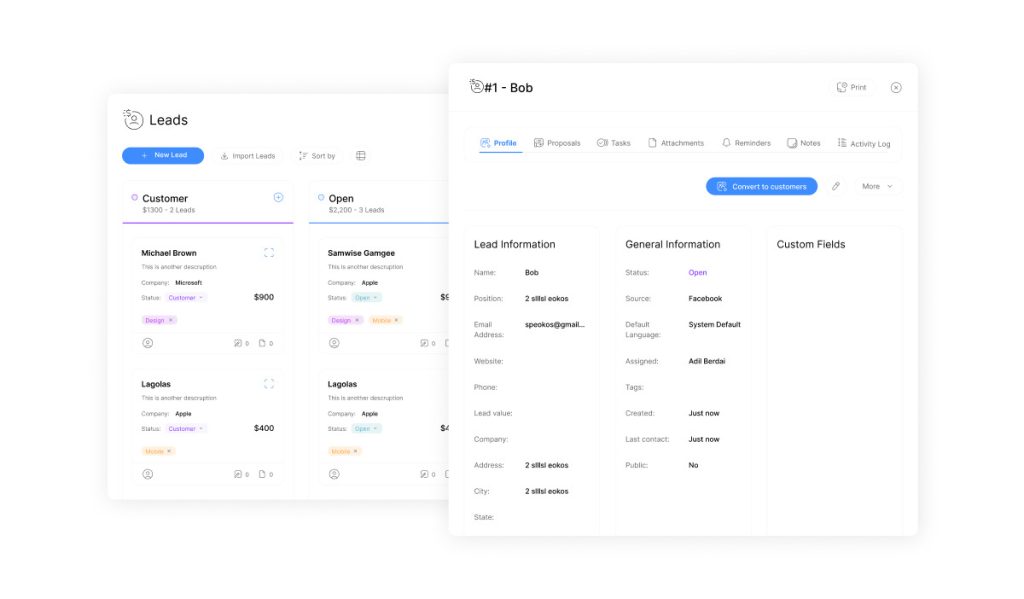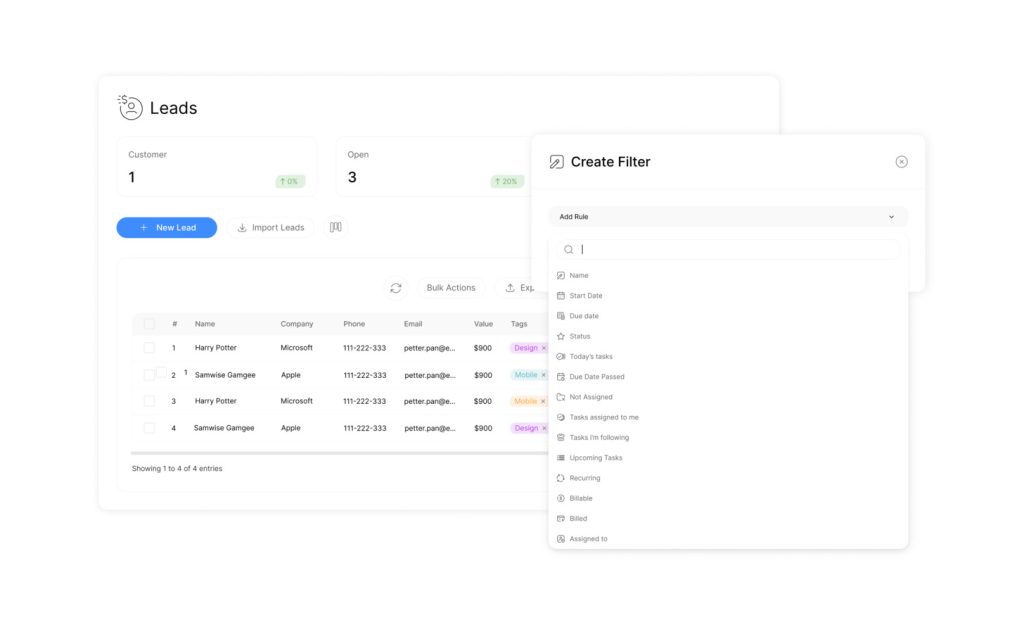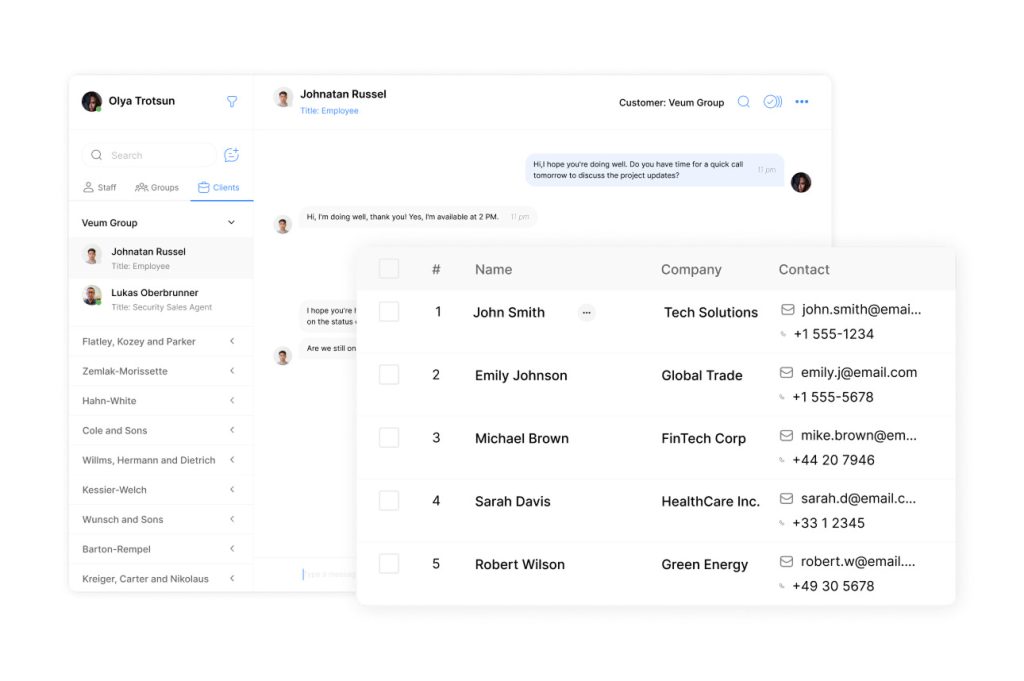Lead List View Essentials: A Comprehensive How-To Guide

Efficiently managing lead data is crucial for businesses to streamline operations and enhance customer relationships. In Salesforce, customizable List Views play a vital role in organizing and filtering data records, enabling users to focus on the most relevant information.
By defining specific criteria, users can create filtered views of their data, such as open opportunities or unresolved cases. This customization empowers businesses to make informed decisions and take quicker actions, ultimately saving time and increasing productivity.
In this comprehensive guide, we will explore how to transform your Salesforce experience by optimizing List Views for efficient lead management. We’ll cover the basics and advanced techniques to help sales and marketing teams prioritize their most valuable leads.
Key Takeaways
- Understand how to create and customize List Views to match your team’s unique workflow requirements.
- Learn how to eliminate information overload by displaying only the most relevant lead information.
- Discover how to optimize List Views to save significant time when managing large volumes of lead data.
- Gain knowledge on implementing a comprehensive List View strategy to enhance visibility.
- Streamline lead management processes by using powerful organizational tools.
Understanding Lead List Views in Salesforce

To effectively manage leads in Salesforce, it’s crucial to understand the concept of Lead List Views. A List View in Salesforce is a list of records that is set up to display a certain subset of records. These views can have a variety of criteria depending on the object and are an easy way to give users quick access to important records.
What Are Lead List Views?
Lead List Views are customizable displays of lead records in Salesforce that allow users to see specific subsets of leads based on defined criteria. These specialized views function as powerful organizational tools that filter your lead database to show only the records that meet specific conditions you establish.
Why Lead List Views Matter for Your Workflow
List views serve as the foundation for efficient lead management by allowing sales teams to quickly access the most relevant leads for their current priorities. The primary advantage of Lead List Views is their ability to transform an overwhelming database of leads into actionable, focused work lists. By eliminating the need to manually search through hundreds or thousands of lead records, Lead List Views become the central navigation tool for sales representatives managing their lead qualification process.
- Lead List Views provide immediate visibility into different segments of your lead pipeline without requiring complex reports or dashboards.
- When properly configured, these views help sales teams prioritize their work and manage their leads more efficiently.
- Understanding the fundamental structure and purpose of Lead List Views is essential before moving on to creating and customizing them for your specific business needs.
Getting Started with Lead List Views

The key to streamlined lead management lies in mastering List Views within the Salesforce platform. To begin, users must understand how to access these views.
Accessing List Views in Salesforce
Accessing Lead List Views in Salesforce begins by navigating to the Leads tab, where you’ll find the default list view selector dropdown. This dropdown offers several pre-configured views, providing a foundation for lead management.
Default List Views vs. Custom List Views
Default List Views provide a starting point, but custom List Views offer more flexibility by allowing users to define specific criteria that match their unique business processes and sales methodology.
- Default views include “All Leads,” “My Leads,” and “Recently Viewed Leads.”
- Custom views enable precise targeting based on multiple parameters such as status, owner, or creation date.
- Understanding the distinction between default and custom views is crucial for effective lead management.
| List View Type | Description | Use Case |
|---|---|---|
| Default | Pre-configured List Views | Quick access to basic lead segments |
| Custom | User-defined List View | Precise targeting based on specific criteria for the object |
Creating Your First Lead List View: Step-by-Step Guide
To create your first Lead List View, start by clicking the gear icon in the upper-right corner of the Leads tab. This action initiates the process of creating a customized view that meets your specific needs.
The creation process involves several key steps. First, select “Create New View” from the dropdown menu. Then, fill in the New View Name and choose your Sharing Settings. Finally, click Save List View to save your new List View.
You can further customize your List View by selecting the fields to display through the Choose Columns and Group Columns options. Sorting your list is also straightforward; simply click on a column header to sort by that field.
Naming Conventions for Effective Organization
Establishing a consistent naming convention is crucial for maintaining an organized library of List Views. Use descriptive names that indicate the purpose of each view, such as “Sales – Hot Leads” or “Marketing – New MQLs.” This practice ensures that all team members can easily identify the purpose of each List View.
| Best Practices | Description |
|---|---|
| Use Descriptive Names | Clearly indicate the purpose of the List View. |
| Establish Consistent Prefixes | Use prefixes like “Sales – ” or “Marketing – ” to categorize views by department. |
| Consider Sharing Settings | Decide whether the view should be private or visible to other team members. |
Essential Filtering Techniques

To maximize the potential of Lead List Views, understanding and applying essential filtering techniques is crucial. Filtering forms the core functionality of Lead List Views, determining which lead records appear in your view based on specific criteria.
Basic Filter Criteria for Lead Management
Basic filter criteria for lead management typically start with fundamental lead attributes such as Status, Lead Source, Created Date, and Owner. These provide the foundation for most useful List Views. The filter interface in Salesforce uses a straightforward “field, operator, value” structure, allowing you to create conditions like “Lead Status equals Open” or “Created Date equals THIS MONTH.”
Advanced Filtering Options
Advanced filtering options expand your capabilities by allowing the use of relative date ranges, field comparisons, and complex logical operators that create highly targeted views. For instance, using the “Created Date” field with relative values like “LAST90 DAYS” helps maintain automatically updating views of recent leads.
Combining Multiple Filters for Precision
Combining multiple filters creates precision in your List Views by narrowing the displayed records to only those meeting all specified conditions. This is achieved through AND logic. For more complex scenarios, you can implement OR logic between filter groups, allowing you to create views that capture leads meeting any of several different criteria sets.
- Essential filtering techniques determine which lead records appear in your view based on specific criteria.
- Basic filter criteria include lead attributes like Status and Created Date.
- Advanced filtering options allow for relative date ranges and complex logical operators.
- Combining filters with AND and OR logic creates highly targeted views.
Customizing Lead List View Columns
The ability to customize Lead List View columns allows users to control exactly which information appears in their view, creating a focused display that highlights the most relevant lead data for their current objectives.
Selecting Relevant Fields
To optimize your List View, it’s essential to select fields that provide actionable information for the specific purpose of each view. This involves moving fields from the “Available Fields” list to the “Selected Fields” list, prioritizing the most important lead attributes for your current workflow needs. By doing so, you can ensure that your List View is tailored to your requirements.
Rearranging Column Order
Rearranging the column order helps create a logical flow of information from left to right. Typically, identifier fields like Name and Company are placed first, followed by qualifying information and action-oriented fields. This logical arrangement enables users to quickly scan and understand the lead data.
Grouping Columns for Better Data Visualization
Grouping columns provides powerful data visualization capabilities by organizing your leads into collapsible sections based on common field values like Lead Status or Industry. To implement column grouping effectively, select fields with a limited number of possible values to avoid creating too many small groups. By grouping your leads in this way, you can gain valuable insights into your data.
By customizing your Lead List View columns, you can create a tailored view that meets your specific needs, enhancing your overall lead management efficiency. As emphasized by experts, “Customization is key to maximizing the potential of your Lead List Views.”
Sharing and Collaboration with Lead List Views
Sharing and collaboration capabilities elevate Lead List Views from individual productivity tools to team-wide assets that standardize lead management processes across your organization.
Setting Visibility Permissions
When creating a List View, determining its visibility is crucial. This is done during the creation process, where you decide whether the view will be visible only to you or to other users in your organization.
Sharing with Team Members
The sharing settings interface allows you to control exactly who can see your List Views. Options typically include sharing with all users, specific roles, or selected individuals. Consider creating role-specific List Views that highlight the leads most relevant to different functions within your sales organization.
Restricting Edit and Delete Access
To maintain the integrity of carefully crafted List Views, restricting edit and delete access is crucial. A new checkbox option in the Add List View and List View Sharing modals allows List View owners and administrators to restrict editing and deletion.
| Feature | Description | Benefit |
|---|---|---|
| Visibility Permissions | Control who can see your List Views | Enhanced collaboration and data security |
| Role-Specific List Views | Create views relevant to different sales functions | Improved team productivity and focus |
| Restricted Edit/Delete Access | Limit editing and deletion to authorized users | Preserves the integrity of List Views |
Optimizing Lead List Views for Different Teams

Optimizing List Views for different teams is crucial for maximizing efficiency in lead management. Various departments interact with leads in fundamentally different ways, requiring customized views to support their specific functions.
Sales Team-Focused List Views
Sales team-focused List Views prioritize actionable information that drives conversion. The “My Open Leads” view is essential for sales representatives, filtering out disqualified or closed leads to focus on prospects with conversion potential.
Marketing Team-Focused List Views
Marketing team-focused List Views emphasize campaign performance, lead source analysis, and nurturing status. Creating views that segment leads by campaign participation helps identify which marketing efforts generate high-quality leads.
Management and Admin-Focused List Views
Management and admin-focused List Views provide oversight capabilities, displaying aggregate information about lead volume, conversion rates, and team performance metrics. Administrators benefit from views highlighting data quality issues, such as leads with missing fields or duplicate records.
Performing Mass Actions with Lead List Views

Lead List Views offer a powerful way to manage leads in bulk, enabling businesses to update, communicate with, or manage multiple lead records at once. This capability is crucial for efficient lead management in Salesforce.
Updating Multiple Records Simultaneously
One of the most powerful features of Lead List Views is the ability to update multiple records simultaneously. This allows users to change field values for numerous leads in a single operation, streamlining tasks like reassigning ownership or updating statuses after a marketing event.
Mass Email Capabilities
Mass email capabilities transform List Views into communication platforms. Users can send personalized messages to all leads in a view without leaving the Salesforce interface. By incorporating merge fields, each message can be personalized with recipient-specific information.
Bulk Record Management
Bulk record management extends to administrative functions like mass deletion, which helps maintain data quality by efficiently removing outdated or irrelevant lead records. The mass transfer capability also allows administrators to quickly reassign leads when sales territories change or when team members leave the organization.
By leveraging these mass action capabilities, businesses can significantly enhance their lead management efficiency, making Lead List Views not just a visualization tool but an operational platform.
Must-Have Lead List Views for Sales Success
Implementing must-have lead List Views is a straightforward way to enhance sales team performance. These views help sales representatives manage their leads more effectively, prioritize their work, and stay focused on their goals.
“My Open Leads” View
The “My Open Leads” view is a critical List View that serves as the daily worklist for sales representatives. To create this view, use two simple filters: “My Opportunities” and “Closed = False”. This List View will be the go-to place for sales reps to manage their open pipeline.
“High-Priority Leads” View
Creating a “High-Priority Leads” view helps sales teams focus on prospects with the highest potential value or urgency. This can be achieved by using scoring fields, engagement metrics, or manually flagged priority indicators.
| List View | Purpose | Filters |
|---|---|---|
| “My Open Leads” | Daily worklist for sales reps | “My Opportunities”, “Closed = False” |
| “High-Priority Leads” | Focus on high-potential prospects | Scoring fields, engagement metrics |
| “Recently Added Leads” | Highlight new leads | Created date within last 7-30 days |
| “Leads Requiring Follow-Up” | Manage outreach schedule | Upcoming or overdue tasks |
“Recently Added Leads” View
The “Recently Added Leads” view ensures new opportunities don’t get lost in the system by highlighting leads created within a recent time period.
“Leads Requiring Follow-Up” View
Implementing a “Leads Requiring Follow-Up” view identifies leads with upcoming or overdue tasks, helping sales representatives manage their outreach schedule effectively.
By implementing these essential List Views, sales teams can create a comprehensive lead management system that guides them through their workflow in a structured, prioritized manner.
Troubleshooting Common Lead List View Issues

Troubleshooting common lead List View issues is essential for ensuring data accuracy and user productivity. While having proper List Views can make a user’s workflow much easier, this is also the place where many problems arise.
For instance, List Views created for people who no longer work at the company or for specific, time-based projects that are never removed or cleaned up can cause clutter. To avoid this, it’s crucial to periodically review your List Views and remove or reduce visibility for those that are no longer needed.
Resolving Visibility Problems
Visibility problems often occur when users report that they cannot see List Views they should have access to. To resolve this, one must check sharing settings, user permissions, and role hierarchies. A common issue arises when List Views are created with “Only I can see this List View” selected, making them invisible to other users.
- Check sharing settings to ensure the List View is shared with the right users.
- Verify user permissions to confirm they have access to the List View.
- Review role hierarchies to ensure the List View is visible to the appropriate roles.
Fixing Filter Errors
Filter errors can occur when using complex combinations of AND/OR logic, inadvertently excluding records. To fix this, it’s essential to understand how filter criteria interact. A frequent error involves using absolute dates instead of relative date ranges, causing views to become outdated over time.
- Use relative date ranges, such as “Created Date equals THIS YEAR,” instead of absolute dates.
- Review filter criteria to ensure they are not excluding intended records.
- Simplify complex filter logic to improve accuracy.
Addressing Performance Concerns
As lead volume grows, views with too many columns or complex filter criteria can load slowly, frustrating users. To address this, limit the number of fields displayed and use indexed fields in filter criteria. Avoiding unnecessary filter complexity also improves performance.
- Limit the number of columns displayed in the List View.
- Use indexed fields in filter criteria to improve query performance.
- Simplify filter logic to reduce load times.
By addressing these common issues, organizations can maintain efficient lead management systems and ensure that their List Views remain a valuable tool for sales success.
Conclusion: Maximizing Your Lead Management Efficiency
By harnessing the full potential of List Views in Salesforce, organizations can revolutionize their lead management processes. Mastering List Views unlocks greater efficiency, productivity, and insights for your organization.
Key benefits include maximizing lead management efficiency, reducing time spent managing leads, and improving lead response times and conversion rates. To achieve these benefits, it’s essential to regularly review and refine your List Views to ensure they continue to support your team’s changing needs.
Consider implementing a quarterly review process to evaluate the effectiveness of existing List Views and identify opportunities for improvement. By doing so, you’ll be able to transform your lead management from a reactive, disorganized process into a structured, proactive system that drives business results.

